Canada’s Combat Ship Team submitted its final proposal for the Canadian Surface Combatant (CSC) project to prime contractor Irving Shipbuilding in Halifax, the design is an adapted Type 26 Frigate.
The Type 26 is designed for anti-submarine warfare and and other missions. The vessel is meant to be stealthy for a surface ship, making it more effective at evading and combating enemy submarines.
The project leader will be Lockheed Martin Canada. Minor changes aside, the Canadian design is similar to the United Kingdom’s Type 26 and Australia’s SEA 5000 programs. In a press release, Lockheed said that the ship will be integrated into the Five Eyes Intelligence Community.
Five Eyes is a special intelligence sharing partnership between the United States, United Kingdom, Canada, Australia and New Zealand.
Lockheed Martin and BAE are the primary contractors alongside Canadian companies CAE, MDA, L3 Technologies, and Ultra Electronics.
Following the news release, the team also published a list of reasons they believe the vessel is best for Canada. Those reasons are listed below.
Right Ship for Canada’s CSC Needs – Purposely designed for high-end anti-submarine warfare and capable of performing a variety of missions in any part of the world, the Type 26 is acoustically quiet, versatile, highly survivable, allows for the greatest margins of growth for future modernisation, and, unlike other 10 to 15-year-old designs, minimises obsolescence risk as a “bow-to-stern” digitally designed warship.
Best Economic Outcomes for Canada – Making $17 billion in value proposition commitments to Canada, Canada’s Combat Ship Team commits to spending billions in innovation across Canada’s priority areas, including $2 billion in supplier development and $2 billion in Research and Development, and $200 million in Advanced Manufacturing. Employing a combined 9,000 Canadians in 40 facilities across the country and engaging a Canadian supply chain of more than 4,000 small and medium sized enterprises, the Team will develop new and enhance existing Canadian defence capabilities, which will bring tremendous exports to global markets.
Lowest Risk Solution – Canada’s Combat Ship Team brings together a pan-Canadian team with a proven track record in delivering complex defence projects on-time and on-budget for the Canadian Armed Forces. As Canada’s only major Combat System Integrator and the provider of the CMS 330, Lockheed Martin Canada has been a trusted defence partner for more than 30 years delivering on the Halifax-class modernisation project and modernising frigates from the Royal New Zealand Navy and Chilean Navy. The Type 26 requires only minor change to meet Canada’s CSC needs and builds upon knowledge gained from the UK’s Type 26 Global Combat Ship and Australia’s SEA 5000 programs.




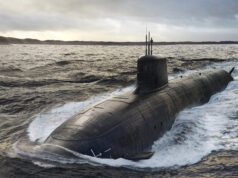
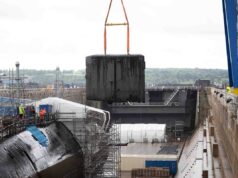
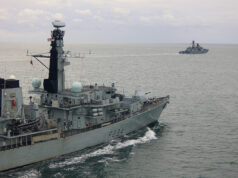
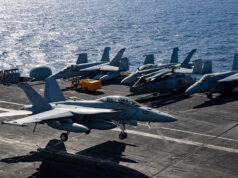

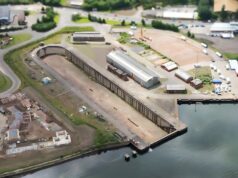
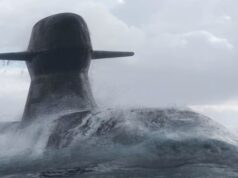

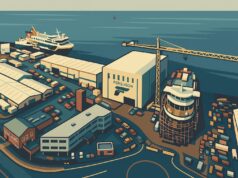

Given Canada’s long history of defense procurement incompetence and the lack of will to actually build any new frigates, the year 2035 seems about right for any new frigates to actually hit the water.
Do we know roughly when a decision is expected?
By the end of the year.
Given the Australian frigate decision T26 must be one of the favourites.
problem is Australia and possibly Canada will chance to have there,s before ours even gets into water
Nope that’s incorrect. The Australian build schedule will have their first (HMAS Hunter) in the water after the first two or three for the RN. I’m not sure about the Canadian build schedule but they definately won’t have the first of class in water before we do if they choose the Type 26.
Most likely around the same time as the Aussie variant
Chris: You are absolutely correct. If Canada does decide by the Fall of this year to acquire 15 Type 26 Frigates from the LM/BAE consortium, both the British and Australian Type 26 Frigates will be in-the-water well before the first Canadian Type 26 is completed. Cheers!!
I would expect T26 to be the favourite for this but as others have said Canada has a history of picking the cheapest least effective option on the table despite their relative wealth. The RN should offer them some used T23 and they would win hands down.
As the “curing process’ has just completed as of the 21st of July 2018, it is now up to the Canadian Government to decide which company has met the qualifications based on each company’s updated process. This could take at least up to the end of Summer or early/mid Fall of this year. Depending on the government’s very slow reactions, I would bet that we will not know until the end of Fall this year. The LM/BAE Type 26 CSC is simply the right solution for Canada’s future naval fleet and at a final cost of approximately $62 billion CAD, they are still well worth the investment and of course would be built here in Canada. But regardless of the merits of each of the ships, the final result of the process will be weighed up between two decisions, one military and one political – what’s the best CSC ASW/AAW warship for Canada, and which bid would best result in an enduring national industry. Regardless of the selection outcome, the opportunity exists for the government to demonstrate vision and understanding of its military capability needs through the selection of the LM/BAE Type 26 frigate.
(Chris H) David – on an unrelated matter it was a great pleasure to witness the RCAF Mount Guard in London and Windsor recently. Excellent drill, huge pride and the RCAF band giving a Canadian take on some familiar marches. And the really nice touch was they mounted guard on the day the RAF celebrated 100 years with that awesome fly past ..
Well done RCAF. Allez Canadiennes
Good for them but I doubt they were all women which is what you’ve made them with your final comment.
The fact the type 26 Canada is the potential winner, along with Australia and the Royal Navy so economics of scale look very promising, is that why type 31 is on hold, basically the Royal Navy can have more Type 26. What are your views
Possible, but unlikely economies of scale would half the price (or more)
The other Julian here. Personally I think this is a strong possibility for reasons I just posted in the comments on the article about the T31e project being suspended. Savings wouldn’t need to be anything close to half. Defence budget black holes aside 8 T26 at whatever the originally anticipated price was are hopefully costed into the equipment procurement plan and then there’s at least another £1.25bn for the 5 T31e. I would hope there is also some extra one-off startup costs budgeted for T31e so the total T31e funding might be more like £1.5bn. I suspect the costs on the first 3 T26 are locked in now but I would hope that BAE would be willing to re-open pricing discussions on the remaining 5 in return for some or all of the T31 budget going to increasing the RN T26 order. A 16.7% reduction in unit cost on the last 5 RN vessels would on its own fund an extra (9th) T26 and if BAE then cut a very competitive price on another 2 vessels in return for solid commitments the T31e budget could probably buy vessels 10 and 11 or maybe just a 10th and another 3 River B2s (or perhaps a B3 variant) just so that HMG can claim to be maintaining hull numbers even though anyone who looks in detail would see that there would be fewer frigates.
If Canada chooses the Type 26 then you would think that the US might scrap their competition for an “existing design” and choose the latest technology from a trusted ally.
The Yanks are never going to get type 26. They will preserve with the Arleigh Burke even though not great at ASW and keep trying to adapt the LCS hill into a frigate. It is a corvette for god’s sake just accept that please USN and go for something way more capable…like a type 26 design.
Finger crossed for type 26 Canada, it is the best ship on offer. Most advanced, capable and adaptable design. Best at ASW by a country mile.
Fingers crossed this is the reason why type 31 scrapped. Maybe BAE are offering the type 26, at a reduced price now. Smart move by BAE. Kills off opposition, keeps them as single tender contractors for warships and the RN gets the ship they want and need.
What do you smoke? Go from over a Bn to a quarter of that price just because Aus are buying 9 made in Aus and Canada might buy several made in Canada?
I don’t think Mr Bell is suggesting that the T26 price will drop to the proposed price of T31. Indeed after the re-starting of the T31 contest I expect if they did go down the “full” T26 route the price point would be made up of a mixture of economies of scale from multiple T26 users and an increase in what was the T31 budget as the MOD faces the reality that what the want and what they would like to pay are miles apart (potentially).
“Go from over a Bn to a quarter of that price just because Aus are buying 9 made in Aus and Canada might buy several made in Canada?”
You don’t need those sort of cuts to get some extra T26 into the frame. If we assume that the costs for the first 3 T26 already ordered are locked in now there is still the pricing for the planned other 5 vessels that could potentially be revisited before you even start to bring the T31e budget into the picture. If BAE could drop the price of those remaining 5 by 16.7% that reduction on its own would fund a 9th T26. I would however expect BAE to want more from HMG in return for such a price cut, i.e. some extra funding from HMG, possibly from cancelling T31e, to add at least a 10th if not also an 11th T26 to the total order.
If HMG could get a worthwhile C3 strategy that might not be a total disaster especially if more modern technology, streamlined maintenance/refit protocols etc could stretch the 1-in-3 deployable ratio just enough to get a reliable 4 deployable vessels out of a fleet of 11 T26.
Could not agree with you more Mr. Bell. The USN will never, repeat never, give a foreign country the ability to design or build a USN Frigate (Type 26), even if it were the right thing for them to do. All of their ships will be designed and built in the U.S.A no matter what. The USN has no desire to build OTS for their navy and will never except another design but their own.
What is up against T26 here? Interest piqued.
(Chris H) Steve M – Apart from the BAE / Lockheed Martin Canada consortium for the Type 26 frigate only two other companies have acknowledged bidding:
* Alion Canada is offering the Dutch De Zeven Provinciën-class air-defense and command frigate.
*Navantia has submitted a bid based on its F-105 frigate design.
Naval Group / Fincantieri failed to submit a bid through the formal process and instead sent a proposal directly to the Canadian government and because of that have been eliminated.
Given the Aussies preferred BAE Type 26 to the Navantia offer (despite them building their Hobart Class destroyers) makes Type 26 a real favourite
Cool and thanks for the info, I look forward to a UKDJ comparison article 🙂
Reading further, it seems it will come down to what Canada are after as T-26 is primarily anti-submarine with the Navantia F-105 and De Zeven Provinciën being primarily anti-air.
From wikipedia Canada are after “The replacement vessels will be somewhat larger than the existing Halifax class, and presumably provide a wide-area air defence capability, anti-submarine warfare capability, as well as anti-shipping capability.”
So it seems they want a general purpose frigate. It all comes down to how highly they rate an ASW ability, alongside the comparison of all 3’s AAW capability. Oh, and politics!
Maybe wishful thinking but it seems to me that with Canada’s direct coastline onto the North Atlantic and a resurgent Russia hence probably more Russian sub activity in the area ASW would be a very high priority. I also know that there are some tensions between Trump-USA and Trudeau-Canada at the moment but, sharing a continent as they do, their defence interests are very closely intertwined and I can well imagine that there might be some pressure coming from the USA in private, given that the US don’t have a horse in this race as far as the bid is concerned, urging the Canadians to buy the best possible ASW assets that they can.
As I say, maybe wishful thinking, but I hope the dynamics I suggest above are at play because that would favour T26 (not that T26 is deficient in AAW either, especially with an all-Mk41 forward silo).
I’m hoping for a similar show off tour by some RN warship in Canada that happened down under. That seemed to woo a few politicians over to our bid apparently. Wouldn’t hurt to order something from Bombardier either.
Julian: Could not agree more with you. To have Canada at the front door of the USA’s ASW defence with the prowess of the Type 26 Frigate, will be critical to both Canada’s & USA’s Continental Defence. It would be great if the US were to come on-board with the Type 26 as well, however they will never accept a foreign designed ship within their Navy, even if it were the best ASW ship design anywhere in the world!!
Steve M: Canada has always been an ASW nation with our older DDH’s Frigates and the Halifax Class as well. Our “Name to Fame” has always been ASW first and foremost. That is what the Canadian government requires in a Future CSC Frigate. The Spanish F-100 Christopher Columbus and Dutch De Zeven Provincien Classes are both great AAW ships, but lack any significant ASW abilities (too noisy as well), which is why the LM/BAE Type 26 GCS is the best option for Canada.
The LM/BAE Type 26 ASW Frigate has almost double the range of both the Spanish F-100 Christopher Columbus and Dutch De Zeven Provincien Classes as well.
I hope the Type 26 wins this.
Hi Steven:
The LM/BAE Type 26 Frigate design is by far the best ASW ship design out there for Canada, even if some “nay” sayers think it only a paper design that has not yet been “proven”. The AAW ability of this revolutionary warship can be strengthened with a more robust MK 41 VLS capability, including a Ballistic Missile Defence (BMD) capability. If Canada decides on the LM/BAE Type 26 Frigate this Fall, there will then be at least 32 sister ships world-wide that can be supported by all three countries (UK, AUS & CAN). Canada is in the unique position to reap the benefits of a better design because of our position within the Type 26 building process between the U.K. & Australia, and when the LM/BAE consortium would begin their build at Irving Shipyard in Halifax over the next several years. This would be a great win for Canadian industry!
The Alion Canada proposal seems a long shot, but it must be a close call between the T26 and F-105 designs. Very different pro’s and cons – the F-105 will have the edge on price, standard USN equipment fit, and better air warfare capabilities. Remember both designs have been selected by the Aussie’s, so that may not be much of a differentiator (unless the Aussies are already getting fed up dealing with the Brits!).
Why is the Alion offer a long shot? The Dutch design is about a CAN $ 1 billion per ship cheaper. This should be a no brainer for the Canadians. Besides the Canadians designed the APAR radar system used in this design. Besides it uses standard US missiles and VLS launchers. Do jou still think of is a long shot?
The Dutch design is a lot cheaper to build. The Dutch paid $ 723 million per ship. It is a proven design, British designs always end up being twice as expensive. If you look at the type 23 class, they always break down. Besides Canada co-designed the radar system.
The type 26 is $ 1 billion more expensive than the Alion ( Dutch design) proposal. This must be a no brainer….
Robert: Not the best ASW option though. This is one of Canada’s top priorities, is to have the very best ASW platform. The Dutch and Spanish designs both have good AAW capabilities, but very much lack an ASW option and are much louder noise wise, than the Type 26 Frigate. Cheers!
The Brits have not been abel to build a descent frigate for decades. Just look at all the problems with the type 45 . It would be a hugh gamble with the taxpayers money. Besides the type 26 is a CAN $ 1 billion per ship more expensive than the Alion offer. This should be a no brainer for our government.
Hi Jon66: The Type 45 has always had power problems with their old gas turbine fit but that problem for them will be eliminated with the retro-fitting of the new RR MT30 Gas Turbine (the same GT fitted on the new QE Carriers). The Type 26 Frigates will also have this new GT. A “no-brainer” for the Type 26 Frigate. Cheers!
It would make sense for both Canada & New Zealand to select the BAE Type-26 frigate if it:-
1) meets their requirement specification;
2) is affordable; and,
3) WORKS for Australia & Britain,
as there are many interoperable benefits for four of the Five Eyes nations to have basically the same platforms… maybe the fifth nation could consider it as well!
However, it’s interesting to note that from a population distribution viewpoint:-
– Australia – 9 vessels (26%) – 25m population (19%)
– Britain – 8 vessels (24%) – 66m population (50%)
– Canada – 15 vessels (44%) – 36m population (27%)
– New Zealand – 2 vessels (6%) – 5m population (4%)
Type 26 for Canada. Excellent decision, in my opinion.
https://www.cbc.ca/news/politics/frigate-designer-canada-defence-1.4869268